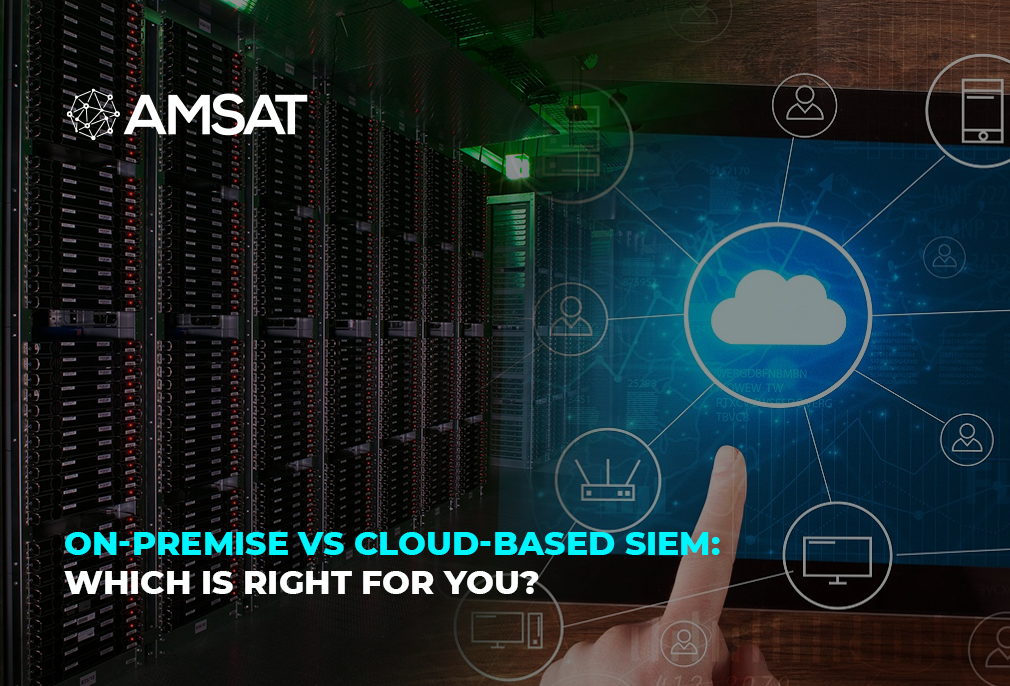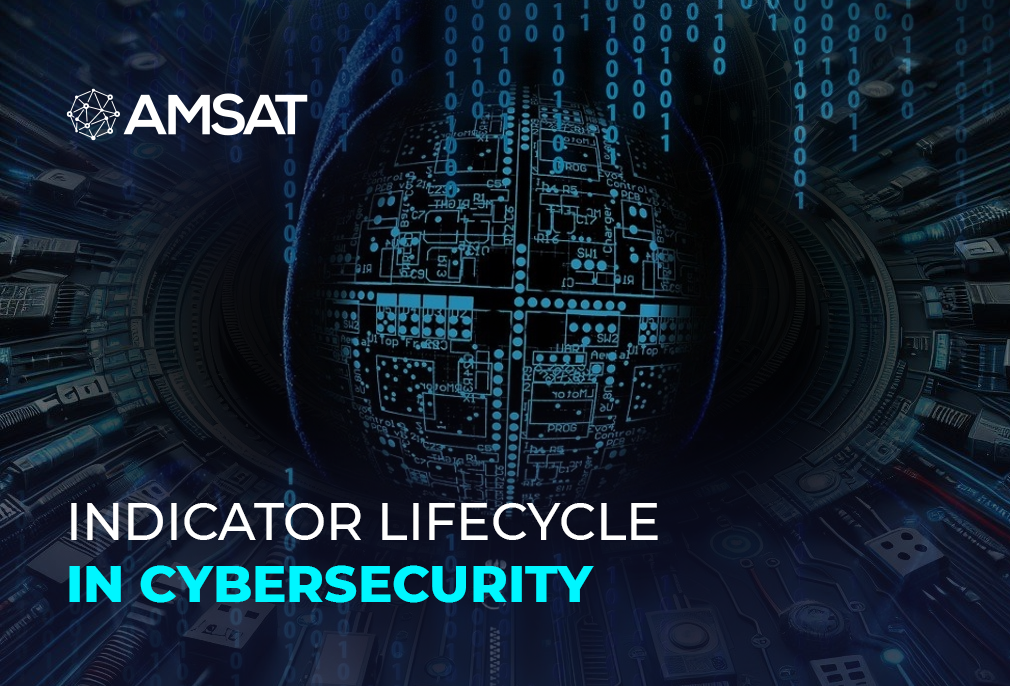Latest Blogs

By AMSAT Feb 14, 2024
On-Premise vs Cloud-Based SIEM: Which is Right for You?
In today’s ever-evolving cybersecurity landscape, organizations are constantly faced with a considerable challenge: to detect and respond to threats effectively. Security Information and Event Management (SIEM) solutions play a pivotal role in achieving this objective by aggregating and examining data from various sources to identify potential security incidents. However, when choosing a SIEM solution, it’s critical to choose between on-premise and cloud-based SIEM solutions, as both of them offer unique advantages and drawbacks.
This blog will explore the key considerations for choosing between these two deployment models, helping you select the solution that best aligns with your organization’s security needs and infrastructure.

On-Premise SIEM
An on-premise SIEM provides complete control over the data and infrastructure. You house the hardware and software on-site, giving you full autonomy over data security, customization, and compliance. This approach is often favored by organizations in highly regulated industries with strict data privacy requirements.
Advantages of On-Premise SIEM
Data Sovereignty: Maintain complete control and visibility over where your data resides and who has access to it.
Customization: Tailor the SIEM to your specific needs and integrate it seamlessly with existing infrastructure.
Compliance: Ensure adherence to specific compliance regulations that may have restrictions on cloud storage.
Disadvantages of On-Premise SIEM
High Cost: Requires significant upfront investment in hardware, software, and IT staff for deployment, maintenance, and upgrades.
Scalability: Scaling resources to accommodate growing data volumes or security needs can be challenging and expensive.
Management Burden: Demands dedicated IT expertise for constant maintenance, software updates, and infrastructure management.

Cloud-Based SIEM
Cloud-based SIEM, also known as cloud SIEM or cloud-native SIEM, leverages the infrastructure and expertise of cloud providers. Your data and SIEM application reside in the cloud, offering scalability, accessibility, and potentially lower operational costs.
Advantages of Cloud-Based SIEM
Lower Cost: Eliminates upfront hardware investment and reduces IT staff requirements for maintenance and upgrades.
Scalability: Easily scale resources to accommodate changing data volumes and security needs with a pay-as-you-go model.
Faster Deployment: Get up and running quickly with minimal IT involvement, often through subscription-based services.
Automatic Updates: Benefit from regular software updates and threat intelligence automatically deployed by the provider.
Accessibility: Access the SIEM and security data from anywhere with an internet connection.
Disadvantages of Cloud-Based SIEM
Data Security Concerns: Some organizations may be apprehensive about entrusting sensitive data to a third-party cloud provider.
Limited Customization: The level of customization might be restricted compared to on-premise solutions.
Vendor Lock-in: Switching providers can be complex due to data migration challenges and potential API incompatibilities.
Making the Right Choice
Ultimately, the decision between on-premise and cloud-based SIEM depends on your organization’s specific needs and priorities. Here are some key factors to consider:

Data Sensitivity: For highly sensitive data, on-premise might offer greater control and peace of mind.
IT Expertise: If you have limited IT resources, a cloud-based solution’s ease of deployment and management might be more attractive.
Scalability Needs: If your data volume or security demands fluctuate frequently, cloud-based scalability can be advantageous.
Budget Constraints: Consider the overall cost, including upfront investments, ongoing maintenance, and IT staff requirements.
Compliance Regulations: Ensure your chosen solution aligns with any relevant data privacy and security regulations.
Some organizations opt for a hybrid approach, combining both on-premise and cloud-based SIEM deployments. This strategy can offer a balance between data control and scalability, but it requires careful planning and integration to ensure seamless security monitoring.
Summary
Both on-premise and cloud-based SIEM solutions offer unique advantages and cater to different organizational needs. By carefully evaluating your priorities, resources, and security requirements, you can make an informed decision that empowers your organization to effectively detect and respond to security threats in the ever-evolving digital landscape.
TAGS
- Cyber Threats
- Cyber Security
- SIEM
Recent Blogs
Ready to Get Started?
Our specialists are ready to tailor our security service solutions to fit the needs of your organization.











Jeremiah4419 says:
Modern Talking был немецким дуэтом, сформированным в 1984 году. Он стал одним из самых ярких представителей евродиско и популярен благодаря своему неповторимому звучанию. Лучшие песни включают “You’re My Heart, You’re My Soul”, “Brother Louie”, “Cheri, Cheri Lady” и “Geronimo’s Cadillac”. Их музыка оставила неизгладимый след в истории поп-музыки, захватывая слушателей своими заразительными мелодиями и запоминающимися текстами. Modern Talking продолжает быть популярным и в наши дни, оставаясь одним из символов эпохи диско. Музыка 2024 года слушать онлайн и скачать бесплатно mp3.
puravive reviews says:
This webpage is phenomenal. The brilliant data reveals the proprietor’s interest. I’m awestruck and expect further such mind blowing posts.